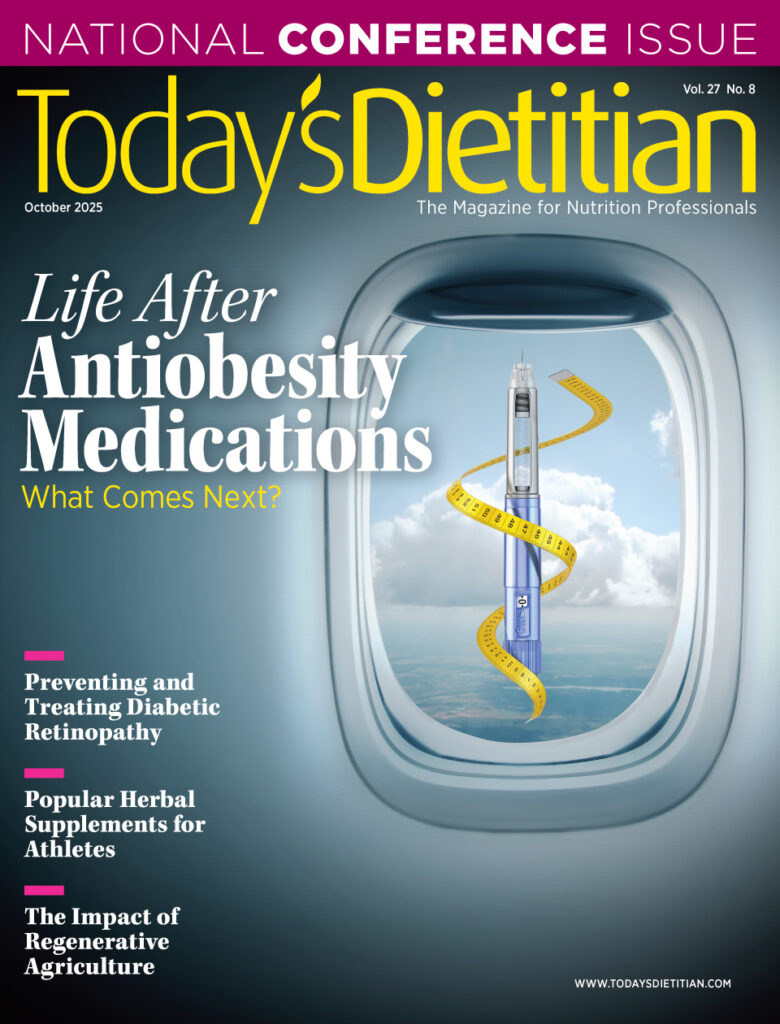Today’s Dietitian
Vol. 26 No. 4 P. 4
April kicks off April Fool’s Day, National Pecan Month, National Brunch Month, and, more importantly, National Soyfoods Month—a time during which clinical RDs and other nutrition and foodservice professionals will trumpet the health benefits of soy and provide recipes to their clients, patients, and patrons, as well as consumers at large.
Much research has been conducted on the health benefits of soy. Soyfoods, such as fortified soymilk, soybeans, soy cereal, soy yogurt, soynuts, tofu, tempeh, and edamame, provide high-quality protein. They’re high in omega-3 and omega-6 fatty acids, contain minimal amounts of saturated fat but an abundance of nutrient-rich isoflavones (compounds classified as phytoestrogens), and have been found to lower cholesterol and triglycerides, as well as blood pressure.
Research suggests soyfoods may lower the risk of prostate cancer in men, alleviate hot flashes in postmenopausal women, and reduce risk of developing endometrial cancer. What’s more, results of a recent peer-reviewed clinical study involving postmenopausal women show that soy protein may improve skin health. Women who consumed 30 g of soy protein per day for six months experienced decreased wrinkle depth and pigmentation and increased skin hydration. The amount of isoflavones women consumed in the study can be found in just two servings of soyfoods, such as 2 cups of soymilk or 1 cup of tofu.
Science has debunked certain myths and misconceptions about soyfoods, such as “soy causes low testosterone levels, loss of libido, and erectile dysfunction in men”; “soy-based infant formula can inhibit growth and reproductive development in babies”; and “soyfoods can increase risk of breast cancer.” Conversely, soyfoods that are part of a well-balanced diet have been found to benefit health in men, women, and children.
Due to soy’s health benefits, the soyfoods market continues to skyrocket. According to a 2023 report from ResearchandMarkets.com, the global soyfoods market brought in $47 billion in 2022 and is estimated to reach $62 billion by 2028, representing a compound annual growth rate of 4.7% from 2023 to 2028.
In honor of National Soyfoods Month, Today’s Dietitian is featuring the article “Soy in the Dairy Aisle” on page 12. In it, RDs will learn more about this fast-growing food category, the latest product trends, dietary guidelines for soy protein intake, and culinary applications dietitians can share with clients and patients.
Also in this issue are articles on what RDs think about the sustainability movement, mindful eating, and the role of omega-3s in childhood health and development. Please enjoy the issue!
— Judith Riddle, Editor
TDeditor@gvpub.com


